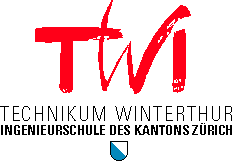|
Pacficar: Expansionboard and multipurpos CAN SystemWithin the last year an autonomous vehicle has been built at the TWI. The project called Pacificar is using a microcontrollerboard (Handyboard) developed at the M.I.T. The car is equipped with sensors and actuators to interact with its surrounding environment.The limitations of the Handyboard brought up the need of an expansion. A recently built expansionboard was designed to handle up to 8 model servos, different kinds of motors and more. The idea of using the Handyboard on larger robot systems made the designer include a CAN controller. This controller makes it possible to add widely used CAN components. Because of limited time only the CAN part of the expansionboard was completed and used for basic communications.One of our tasks was the implementation of the remaining components. We had to test them and write software for an easy handling. The other task was to design and build a multipurpose CAN system which makes it possible to easily connect different kinds of sensors and actuators to a Handyboard.
After reworking the expansionboard and testing all the components we designed and developed a CAN system. This System consists of sensor/actuator moduls and a universal CAN interface which can be easily plugged together. A bus was designed to connect the different kinds of moduls and the CAN interface to allow industrial components such as UARTs, motorcontrollers or simple I/O ports to be connected. With this solution we can cover most of the interfaces between sensor/actuators and a microcontroller.Because of the complexity of the motorcontroller we decided to build a separate motorcontroller-CAN interface.We have finished the soft- and hardware of some sensor/actuator moduls, the universal CAN interface and the motorcontroller-CAN interface.The designed multipurpose CAN system allows interaction of all kinds of masters (Handyboards) and slaves (sensors and actuators) in an easy way.
| 

